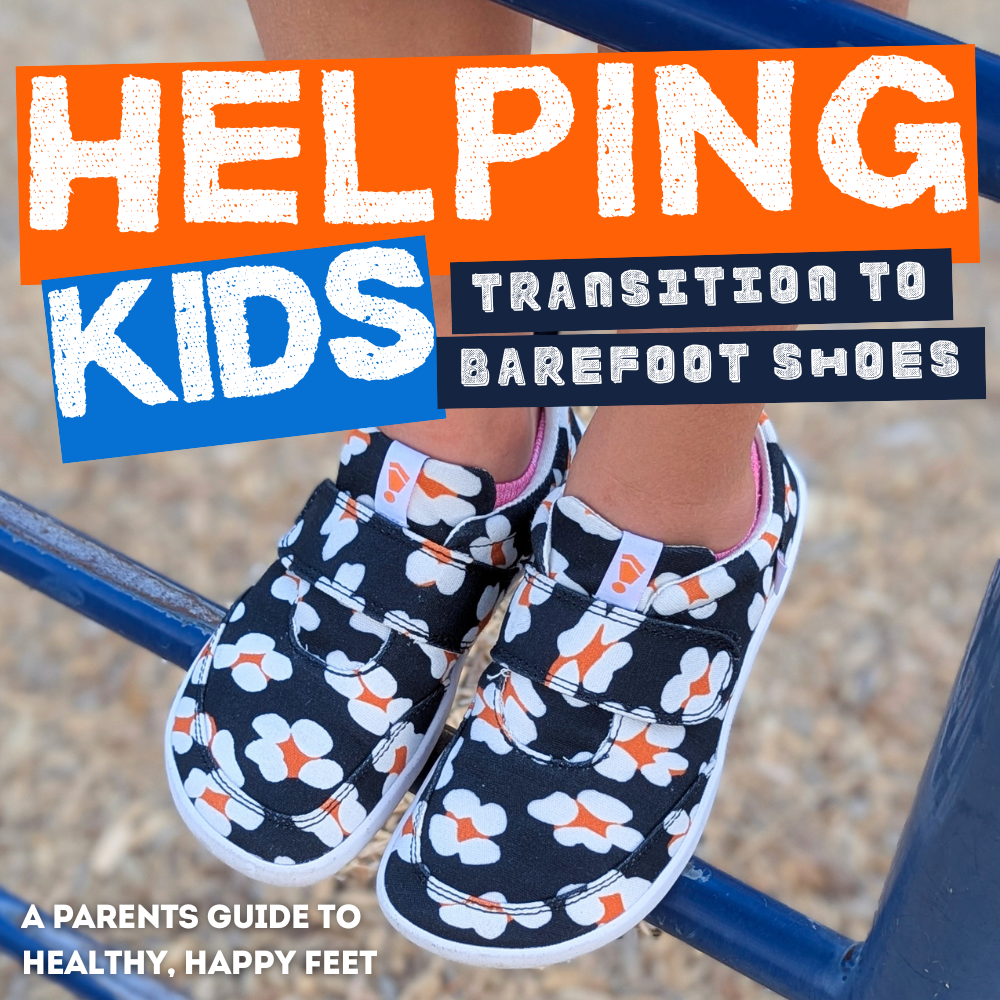Children’s feet are at a stage of rapid growth, strengthening, and adaptation from toddler years onward. Yet most conventional footwear interferes with this natural process. Constrictive toe boxes, rigid soles, and high heels limit movement and change posture, balance, and foot mechanics.
Barefoot shoes, on the other hand, are made with a child's natural anatomy in consideration. They have wide toe boxes, zero drop (no height differential between heel and toe), and ultra-flexible soles to enable the foot to move freely and feel the ground's texture. All these enable improved balance, posture, and sensory input, building blocks of healthy motor development.
How Traditional Shoes Restrict Growth
Most well-liked shoe styles, particularly for children, are more concerned with looks than function. Thick midsoles, arch support, and stiff shape can constrain the foot from moving, gripping, and developing naturally. This can lead to muscle weakness, improper posture, and long-term structural issues.
Footwear must assist development, not dominate it. As podiatrists and pediatricians more and more prescribe minimalist shoes, parents are starting to question traditional options and pursue greater ones.

When to Start: Signs a Child Is Ready for Barefoot Shoes
Most kids can start using barefoot shoes when they are walking with confidence. The following signs are typical of readiness:
-
Constant shoe removal due to irritation
-
Toe gripping or curling when walking
-
Flat-footed gait or noticeable balance problems
Parents also need to look at their child's present footwear. If the shoes look too stiff, are too narrow in the toe, or leave red marks on the skin after being worn, it is time for a change. Minimal footwear supports natural movement, allowing children to develop strength and coordination during the foundational years of development.
A Gradual Transition: Week-by-Week Timeline
Progress to barefoot shoes gradually to let the feet and leg muscles adapt.
Week 1: Start with in-home wear for brief times, around the home or during casual activity.
Week 2: Start short outdoor walks or playtime in barefoot shoes.
Week 3: Take turns between barefoot shoes and regular shoes as necessary for school or extended excursions.
Week 4 and later: Gradually increase wear time every day and decrease dependence on old shoes.
To make it easier, supportive accessories like toe socks, flexible insoles, and cushioned inserts can serve to be comfortable during the transition period. Be attentive to watch out for any episodes of discomfort, especially calf strain or heel sensitivity, and make changes accordingly.
Why Summer Is the Perfect Season to Make the Switch
Summer provides a prime time to switch to barefoot shoes. Kids spend more time playing outside, and light clothes make them more open to altering their regular ways. Warm-weather footwear, lightweight, flexible, and moisture-wicking, is particularly helpful in making the transition to minimalist footwear.
Splay's Kids Shoes Collection has alternatives that are great summer shoes, with light materials, natural fit, and grip-sensitive soles ideal for playgrounds, parks, and daily wear.
How to Choose the Right Barefoot Shoes for Children
Parents can check for three primary features when choosing barefoot shoes for children:
-
Flexible soles that can bend with the foot easily
-
Secure heel fit that prevents slipping
Splay Shoes provides a carefully crafted selection of barefoot shoes designed specifically for children at each stage. From toddlers just beginning to walk to very active school-age children, Splay's Kids Shoes Collection has sizes and styles appropriate for both everyday use and seasonal wear.
Proper sizing is crucial. Parents should consult Splay's size chart and printable foot measurement chart to guarantee the best fit. A thumb-width space before the toes should be there, and the shoe should bend easily in the hand.
Common Questions Parents Ask
Q. Will my child trip more in barefoot shoes?
A. No. Ground feel is amplified, and a normal gait is promoted, which can actually help stability.
Q. Do children need to change their walking style?
A. Not consciously. The majority of the children will adjust naturally since their bodies will adapt to the enhanced sensory input.
Q. What if my child complains that the shoes feel different?
A. They will be different at first, lighter, more flexible, and roomier. The majority of children adapt in a matter of days with regular use.
Q. Are barefoot shoes appropriate to wear all year round?
A. Absolutely. While summer is the best season to begin, most barefoot shoe companies (including Splay) have year-round models appropriate for all seasons.

Create a Foot-Healthy Lifestyle: It’s More Than Just the Shoes
The advantages of barefoot shoes are amplified when accompanied by foot-friendly practices:
-
Providing barefoot playtime on safe surfaces
-
Incorporating foot-strengthening activities into everyday routines (e.g., toe object pickup, balance games)
- Steering clear of overly limiting gear, such as rigid orthotics, except for medical necessity
Encouraging natural movement, posture, and strength through normal play can result in a lifetime of healthy feet. Children growing up in barefoot-aware environments are likely to have strong arches, improved balance, and healthier biomechanics in general.
Get Splay Kids' Shoes This Summer
Transitioning children to barefoot shoes is an anticipatory step toward promoting their future health and comfort. With careful planning, gradual transition, and supportive product options, the transition can be both seamless and rewarding.
Splay Shoes is honored to assist families as they make this journey. Our dedication to minimal, functional, and developmentally appropriate shoes facilitates children moving naturally, as nature intended.
Explore our Summer Collection!










